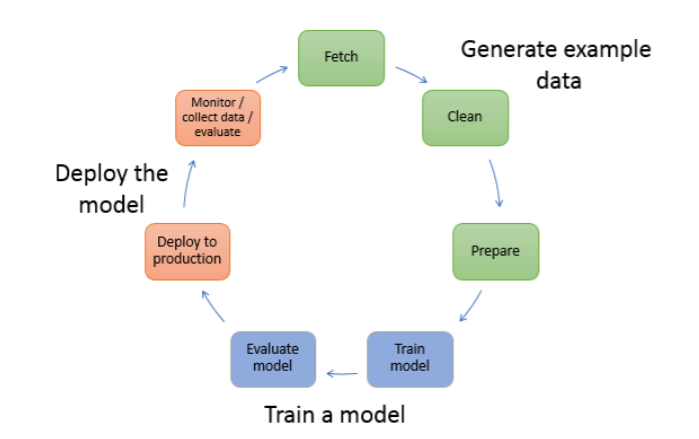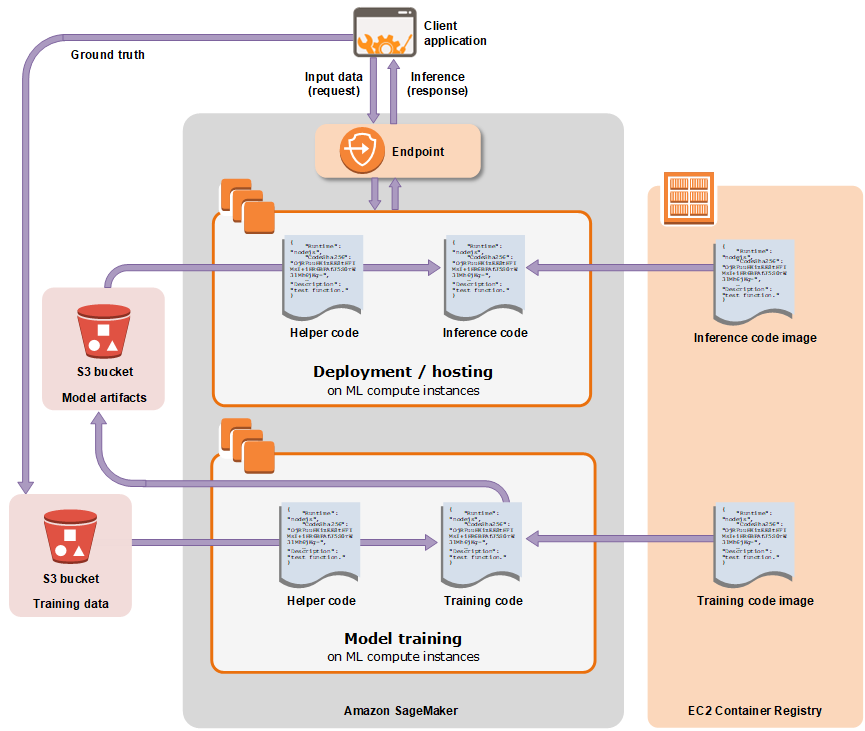Amazon Web Services (AWS): SageMaker: Points to remember
Let's learn about Amazon SageMaker:
-
SageMaker is a fully-managed service that enables data scientists and developers to quickly and easily build, train & deploy machine learning models.
-
SageMaker enables developers and scientists to build machine learning models for use in intelligent, predictive apps.
-
SageMaker is designed for high availability. There are no maintenance windows or scheduled downtimes.
-
SageMaker APIs run in Amazon’s proven, high-availability data centers, with service stack replication configured across three facilities in each AWS region to provide fault tolerance in the event of a server failure or AZ outage.
-
SageMaker ensures that ML model artifacts and other system artifacts are encrypted in transit and at rest.
-
Requests to the SageMaker API and console are made over a secure (SSL) connection.
-
SageMaker stores code in ML storage volumes, secured by security groups and optionally encrypted at rest.
-
SageMaker allows users to select the number and type of instance used for the hosted notebook, training & model hosting.
-
SageMaker provides a full end-to-end workflow, but users can continue to use their existing tools with SageMaker.
-
Users pay for ML compute, storage and data processing resources their use for hosting the notebook, training the model, performing predictions & logging the outputs.

-
SageMaker supports Jupyter notebooks.
-
Users can persist their notebook files on the attached ML storage volume.
-
Users can modify the notebook instance and select a larger profile through the SageMaker console, after saving their files and data on the attached ML storage volume.
-
Managed Spot Training with SageMaker lets users train their machine learning models using EC2 Spot instances, while reducing the cost of training their models by up to 90%.
-
Managed Spot Training is supported on all AWS regions where Amazon SageMaker is currently available.
-
There are no fixed limits to the size of the dataset users can use for training models with Amazon SageMaker.
-
SageMaker includes built-in algorithms for linear regression, logistic regression, k-means clustering, principal component analysis, factorization machines, neural topic modeling, latent dirichlet allocation, gradient boosted trees, sequence2sequence, time series forecasting, word2vec & image classification.
-
SageMaker also provides optimized Apache MXNet, Tensorflow, Chainer & PyTorch containers.
-
SageMaker supports users custom training algorithms provided through a Docker image adhering to the documented specification.
-
User can train reinforcement learning models in SageMaker in addition to supervised and unsupervised learning models.

-
SageMaker RL supports a number of different environments for training reinforcement learning models.
-
SageMaker RL includes RL toolkits such as Coach and Ray RLLib that offer implementations of RL agent algorithms such as DQN, PPO, A3C & many more.
-
Users can bring their own RL libraries and algorithm implementations in Docker Containers and run those in SageMaker RL.
-
SageMaker Neo is a new capability that enables machine learning models to train once and run anywhere in the cloud and at the edge.
-
SageMaker Neo contains two major components – a compiler and a runtime.
A Points to remember series by Piyush Jalan.